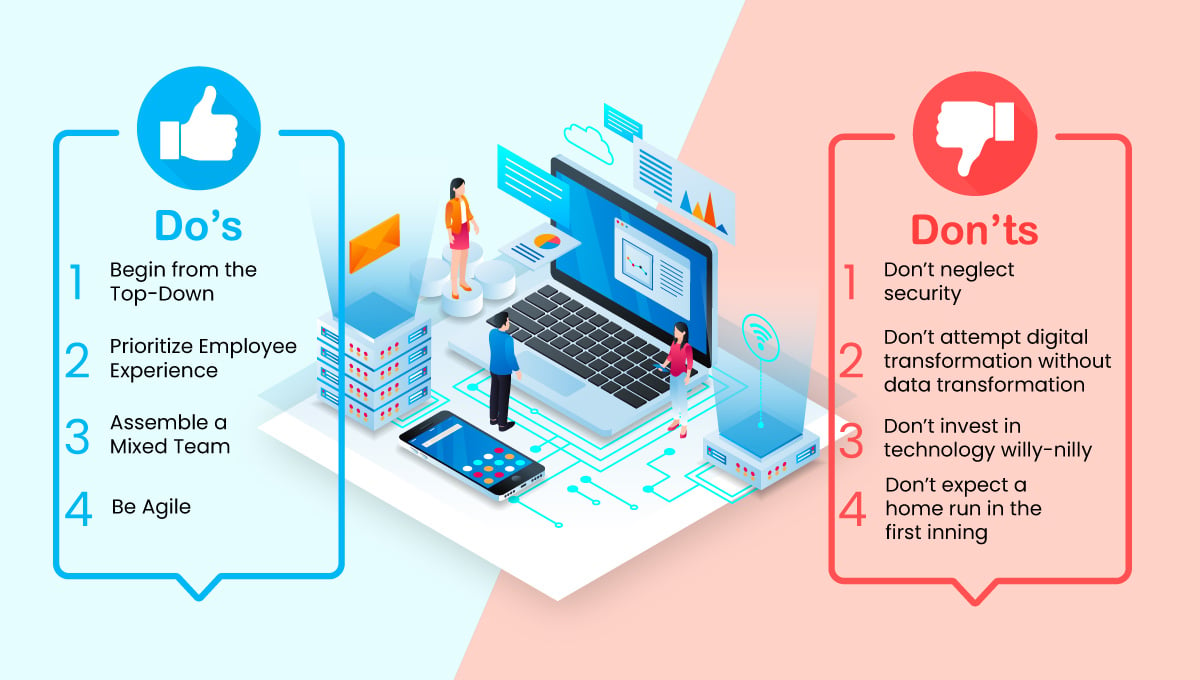
The pandemic might be the best thing to happen to the digital transformation (DX) business case.
Companies worldwide scrambled to respond to unforeseen and unprecedented challenges in different areas of the business. It showed how woefully inadequate some businesses were in their technology capabilities while challenging them to adapt fast to stay afloat.
Exposing these weaknesses also afforded opportunities that would not arise had the companies’ mettle not been tested. They had to build the boat while sailing or drown while trying.
The most successful companies learned fast that they needed to leverage technology to meet the new demands of their workforce and customers. From e-commerce to cloud migration to work-from-home, available technology made possible something that would have been unthinkable twenty years ago—survival.
A McKinsey survey estimated that the disruption sped up the pace of the digital transformation movement by a whopping seven years. Digital deployment that would have normally taken years happened in months.
Now that the worst is over, it’s time to assess the status quo and observe some best practice do’s and don’ts that will ensure a successful transition for the entire organization.
4 Dos
1. Begin from the Top-Down
Digital transformation should start at the top, with executives and senior management leading the way. This isn’t a simple system upgrade or new software installation: it’s a complex, organization-wide, multi-faceted process that requires a culture shift. It shouldn’t be IT-led but C-suite-led.
Top leadership decides and communicates the vision, the goals, and the scope and secures support from stakeholders. They may have their own agendas but must have a unified vision for the DX process. This is what will inform the culture change that is necessary for effective deployment. Their commitment and enthusiasm will trickle down the organization as they determine and communicate what success looks like for each stage of the process.
2. Prioritize Employee Experience
DX is driven by technology but fueled by people. It is the people, the users, who make it happen. So, it makes sense for your approach to be people-centric. High-performing companies like Google and Apple recognize this, and their models are worth emulating.
Employee experience can have a tremendous impact on the change results. If your people feel like they are part of the process and they stand to benefit, they will be more supportive, loyal, engaged, and committed. Empower them.
3. Assemble a Mixed Team
Your DX project support team should be well-balanced. Select employees with varied expertise from different business units to cover multiple perspectives. This will help encourage greater involvement among staff and boost adoption rates. Include tech people (IT, technology partner, CIO), management (business units, HR, C-suite), and operational end users.
4. Be Agile
Digital transformation is a formidable project that won’t take a week, a month, or even a year. It’s ongoing—a multi-year journey—so the best approach is to break it into bite-size, short-term sprints, each with its own measurable goals.
An agile approach is especially suitable when you need to control the risks presented by unknown factors. So don’t create and become attached to a long-term plan. Change in short bursts, get feedback, and iterate.
Flexibility is crucial since it can make or break the process. With each sprint, you will gain valuable insights that will propel you forward at a brisker pace, providing momentum that gains support and rallies the troops. This will make the changes more manageable and avoid fatigue caused by the continuous change that can overwhelm them.
4 Donts
1. Don’t neglect security
Make security a priority. Remote work has complicated things significantly by making systems vulnerable to cyber threats. Data security is critical. IT no longer has the oversight it did before the pandemic, so implement measures to counter those risks.
Train employees on cyber security. At a minimum, have protection systems such as data encryption, antivirus, and endpoint protection.
2. Don’t attempt digital transformation without data transformation
New technologies need accurate, reliable data. Without trustworthy data, your initiatives will stall.
Data isn’t solely an IT issue; it is a company issue and should be prioritized accordingly. If decision-makers take an active interest in resolving data quality problems and governance, they will pave the way for effective digital transformation. You want to ensure you have quality ingredients to end up with a quality product, so place data preparation high on the agenda.
Unify your data. Having it siloed in multiple databases and sources prevents you from having an accurate understanding of your data. Create a single source of truth with an integrated data infrastructure to help standardize decision-making processes.
3. Don’t invest in technology willy-nilly
The sheer number of options available will make your head spin and your budget tremble. It’s important to select the right partner and invest only in the tools that serve your specific needs. Use what works for you, not what’s popular. When selecting technology, keep reliability, efficiency, and scalability in mind. Stick to your requirements and criteria. It’s easy to go off the deep end with cost.
4. Don’t expect a home run in the first inning
The process will not be flawless, and it will take time. Implementing a system of feedback so you know what works and doesn’t will keep you on course and promote continuous improvement.
With a proper change management strategy in place, your people will adjust to the big changes with minimal disruption, especially if it includes a plan to upskill and reskill where necessary.
Are you satisfied with the progress you’re making?
How would you rate your current level of success with digital transformation in your organization? If you think there’s room for improvement, Pixentia will help you devise a strategy that gets you where you need to be.
Phenom eCloud is a comprehensive technology solutions provider committed to empowering businesses to overcome challenges, enhance their workforce capabilities, and achieve superior outcomes.




Leave a Comment